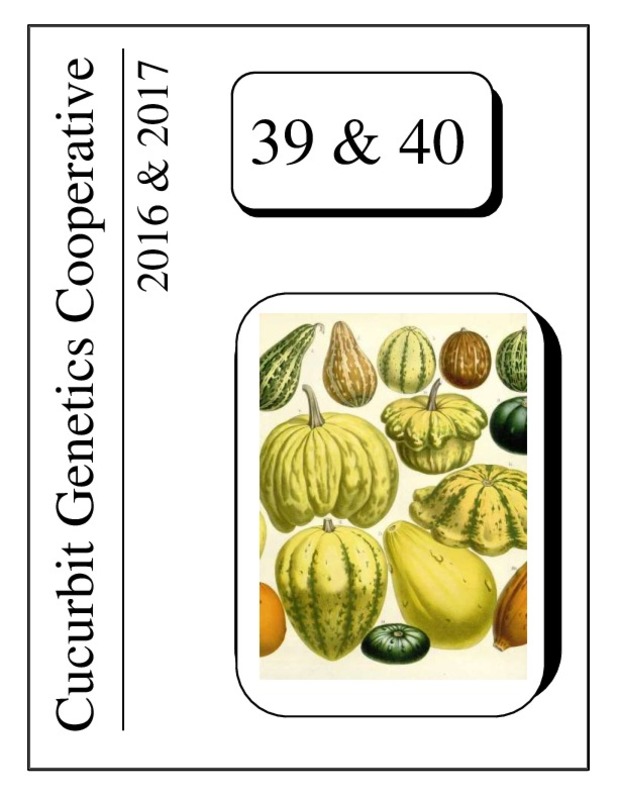JavaScript is disabled for your browser. Some features of this site may not work without it.
Buscar en RiuNet
Listar
Mi cuenta
Estadísticas
Ayuda RiuNet
Admin. UPV
Generation and Potential Use of Interspecific Cucumis Hybrids
Mostrar el registro sencillo del ítem
Ficheros en el ítem
| dc.contributor.author | Cáceres-Burbano, Andrés
|
es_ES |
| dc.contributor.author | Gisbert Domenech, María Carmen
|
es_ES |
| dc.contributor.author | Picó Sirvent, María Belén
|
es_ES |
| dc.contributor.author | Ferriol Molina, María
|
es_ES |
| dc.date.accessioned | 2018-05-11T04:20:31Z | |
| dc.date.available | 2018-05-11T04:20:31Z | |
| dc.date.issued | 2017 | es_ES |
| dc.identifier.issn | 1064-5594 | es_ES |
| dc.identifier.uri | http://hdl.handle.net/10251/101718 | |
| dc.description.abstract | [EN] Grafting is a traditional method used to avoid soil stresses. It is commonly used today in vegetable production as an alternative to conventional agrochemical control. Cucurbita hybrids are widely used as rootstocks for cucurbits, such as watermelon (Citrullus lanatus (Thunb.) Mansf.) and melon (Cucumis melo L.), but they sometimes have negative effects on fruit quality (5) or lack resistance against nematodes (3)(14). The Cucumis genus represents an important source of germplasm to obtain new potential rootstocks useful for melons. Interspecific hybrids between Cucumis species can provide resistances against important pathogens without altering fruit quality due to a closer genetic relationship between the rootstock and the scion. Some attempts have been conducted to cross cultivated Cucumis species (melon and cucumber) with wild ones, but with limited success (2)(10)(12)(15). However, hybridization among wild Cucumis species is successful for some cross combinations (2). We have performed several interspecific crosses and found promising results with the hybrid between C. ficifolius A.Rich x C. myriocarpus Naudin. | es_ES |
| dc.description.sponsorship | This work was supported by a project funded by the Ministerio de Economía y Competitividad AGL2014- 53398-C2-2-R (jointly funded by FEDER), and project Universitaria del Ministerio de Educación, Cultura y Deporte of Spain.PHBP14/00021 funded by the Dirección de Política | |
| dc.language | Inglés | es_ES |
| dc.publisher | 1122 Holzapfel Hall. college Park | es_ES |
| dc.relation.ispartof | Cucurbit Genetics Cooperative | es_ES |
| dc.rights | Reserva de todos los derechos | es_ES |
| dc.subject | Grafting | es_ES |
| dc.subject | Hybrids | es_ES |
| dc.subject | Cucumis | es_ES |
| dc.subject.classification | GENETICA | es_ES |
| dc.subject.classification | BOTANICA | es_ES |
| dc.title | Generation and Potential Use of Interspecific Cucumis Hybrids | es_ES |
| dc.type | Artículo | es_ES |
| dc.relation.projectID | info:eu-repo/grantAgreement/MINECO//AGL2014-53398-C2-2-R/ES/APROXIMACIONES BIOTECNOLOGICAS Y CULTURALES PARA LA MEJORA DE LAS RESISTENCIAS Y EL CONTROL DE ENFERMEDADES EN MELON Y SANDIA/ | es_ES |
| dc.relation.projectID | info:eu-repo/grantAgreement/MECD//PHBP14%2F00021_1/ES/PHBP14%2F00021_1/ | es_ES |
| dc.rights.accessRights | Abierto | es_ES |
| dc.contributor.affiliation | Universitat Politècnica de València. Departamento de Biotecnología - Departament de Biotecnologia | es_ES |
| dc.contributor.affiliation | Universitat Politècnica de València. Departamento de Ecosistemas Agroforestales - Departament d'Ecosistemes Agroforestals | es_ES |
| dc.description.bibliographicCitation | Cáceres-Burbano, A.; Gisbert Domenech, MC.; Picó Sirvent, MB.; Ferriol Molina, M. (2017). Generation and Potential Use of Interspecific Cucumis Hybrids. Cucurbit Genetics Cooperative. 39-40(39-40):1-4. http://hdl.handle.net/10251/101718 | es_ES |
| dc.description.accrualMethod | S | es_ES |
| dc.relation.publisherversion | http://cuke.hort.ncsu.edu/cgc/cgcreports.html | es_ES |
| dc.description.upvformatpinicio | 1 | es_ES |
| dc.description.upvformatpfin | 4 | es_ES |
| dc.type.version | info:eu-repo/semantics/publishedVersion | es_ES |
| dc.description.volume | 39-40 | es_ES |
| dc.description.issue | 39-40 | es_ES |
| dc.relation.pasarela | S\346575 | es_ES |
| dc.contributor.funder | Ministerio de Educación, Cultura y Deporte | es_ES |
| dc.contributor.funder | Ministerio de Economía y Competitividad | es_ES |
| dc.contributor.funder | Conselho Nacional de Desenvolvimento Científico e Tecnológico, Brasil |






